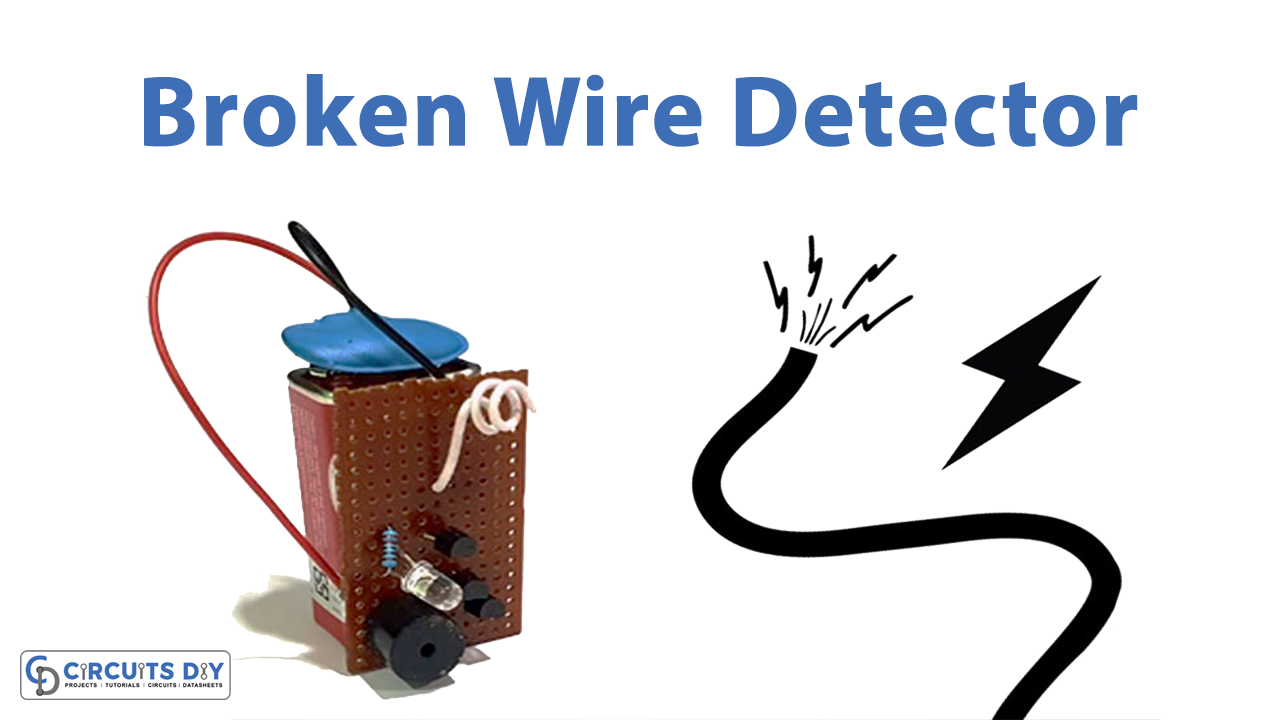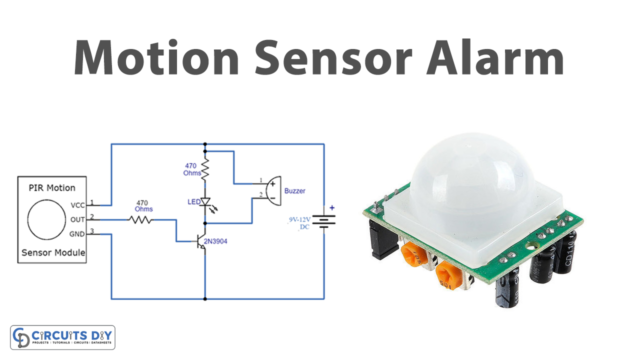In this tutorial, we are going to make a “Broken Wire Detector”.
What to do if electrical wiring has been damaged inside a wall. When a wire is shorted out or is broken inside a wall and you need to locate it then an electric circuit tracer/detector can help to find the wire. Identifying & locating the broken wire Inside the wall or plastic insulation is very difficult. Here we design a simple broken wire detector circuit with IC CD4069 (CMOS Hex inverter) and sound indicator buzzer, visual indicator LED. We can identify the exact location of the broken wire by using this simple circuit, it is most suitable for only the AC supply carrying wire.
When there will be AC voltage present near it, then it will start beeping, and the LED will go high by detecting an electromagnetic field (EMF) generated in the AC carrying wire. When there will be no AC voltage or if there will be a broken wire, then the buzzer will remain quiet and the LED will go low. This circuit can also serve as an EMF detector and can detect the electric field generated by Alternating Current (AC). This circuit should be employed with a perfect length of approximately 15 cm wire with spiral wire and it acts as an EMF-detecting antenna, sensitivity of this circuit can be varied by variable resistor VR1. You must be safe while testing the AC supply and do not touch the supply wire with bare hands, this antenna wire should not directly touch the high AC supply.
Hardware Required
| S.no | Component | Value | Qty |
|---|---|---|---|
| 1. | IC | CD4069 | 1 |
| 2. | LED | – | 2 |
| 3. | Transistor | BC547 | 1 |
| 4. | Diode | 1N4007 | 1 |
| 5. | Resistor | 1MΩ,10KΩ,220KΩ,470KΩ,330Ω,1.2KΩ | 1,1,1,1,1,1 |
| 6. | Variable Resistor | 20KΩ | 1 |
| 7. | Capacitor | 100nF, 470pF | 1,1 |
| 8. | Connecting Wires | – | – |
| 9. | Battery | 9V | 1 |
Circuit Diagram

CD4069 Pin Configuration

IC CD4069 is a device consisting of six CMOS inverter circuits, it has 14 pins and is available in a different package. This IC can be used for all general-purpose inverter applications. These Inverter circuits are here used to oscillate up to 1KHz frequency signal.
Working Explanation
The main part of the circuit is IC 4096, it acts to detect the electromagnetic field. It is connected linearly by placing a feedback resistor between pins 1 and 2. The resistance of the feedback resistor is kept high so that the change in the electromagnetic field does not affect the IC 4096. Here resistor R3, R4, and capacitor C2 timing components that decide the frequency and help IC CD4069 to oscillate signal, and will be applied to the buzzer element. IC becomes enabled while the detection of EMF on the testing wire. Two LEDs are connected with pin 12 of CD4069 through transistor BC547. Here this Q1 acts as a switch and makes LED1 glow during EMF detection and makes LED2 glow during the absence of EMF.
Now when there will be no AC voltage present near the live wire then the output pin 10 will remain low, and the diode D1 starts conducting in the forward-biased mode and holds back the oscillator part from oscillating. Similarly, the low output of pin 6 restrains the transistor from conducting. As a result, the buzzer will not beep and the LED will remain low. When the circuit detects the presence of AC voltage near it, then the output pin 10 goes high. This will allow the oscillator to oscillate at around a specific frequency. When the oscillator will oscillate, then it will make the LED blink at a very high speed and the buzzer will start to beep. While LED and buzzer are oscillating but they appear to be continuously on as the speed of blinking is very high. The sensitivity of this circuit can be varied by variable resistor VR1.
Applications
Can be used in electrical troubleshooting and repairing a damaged electric circuit.







